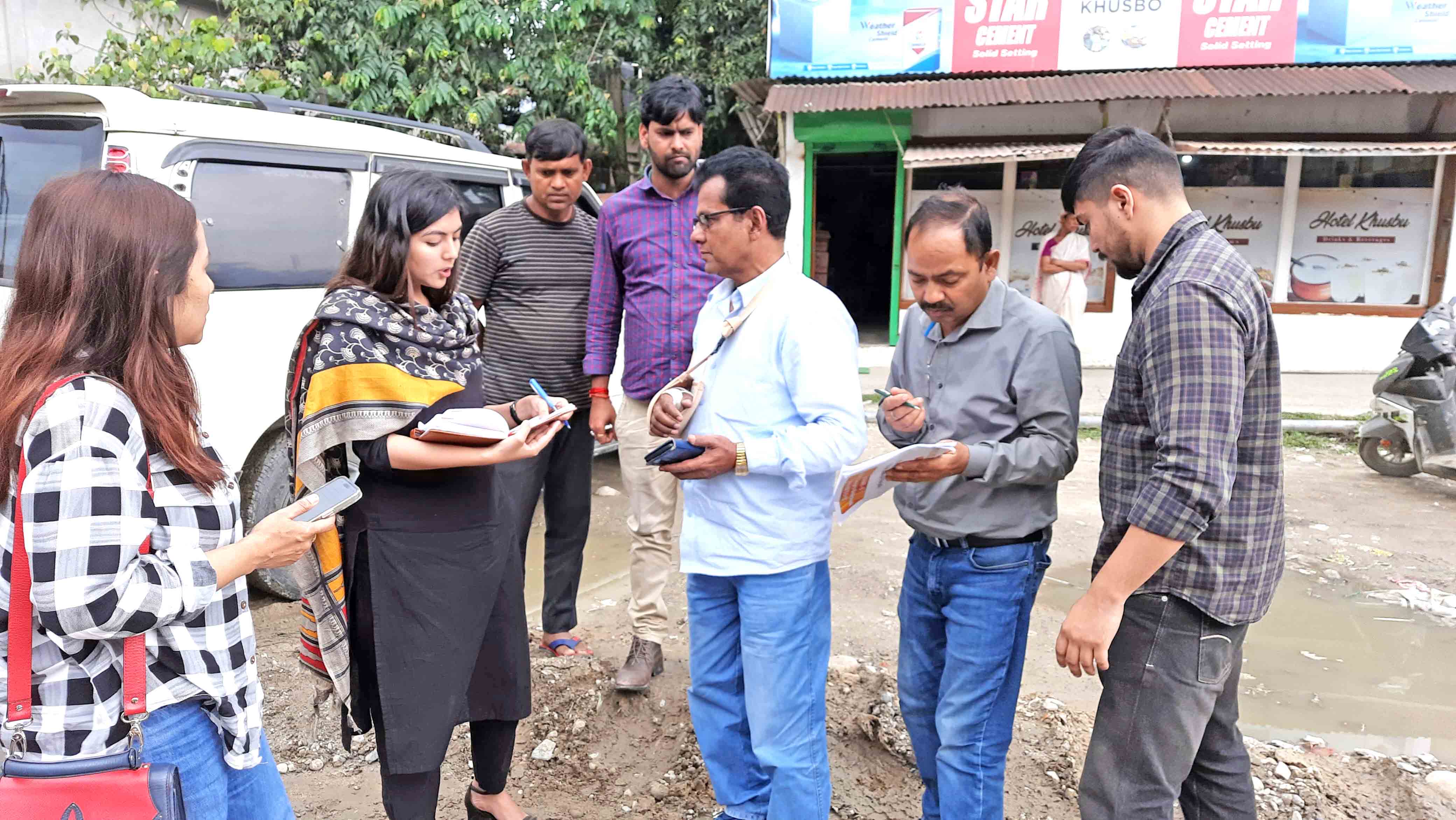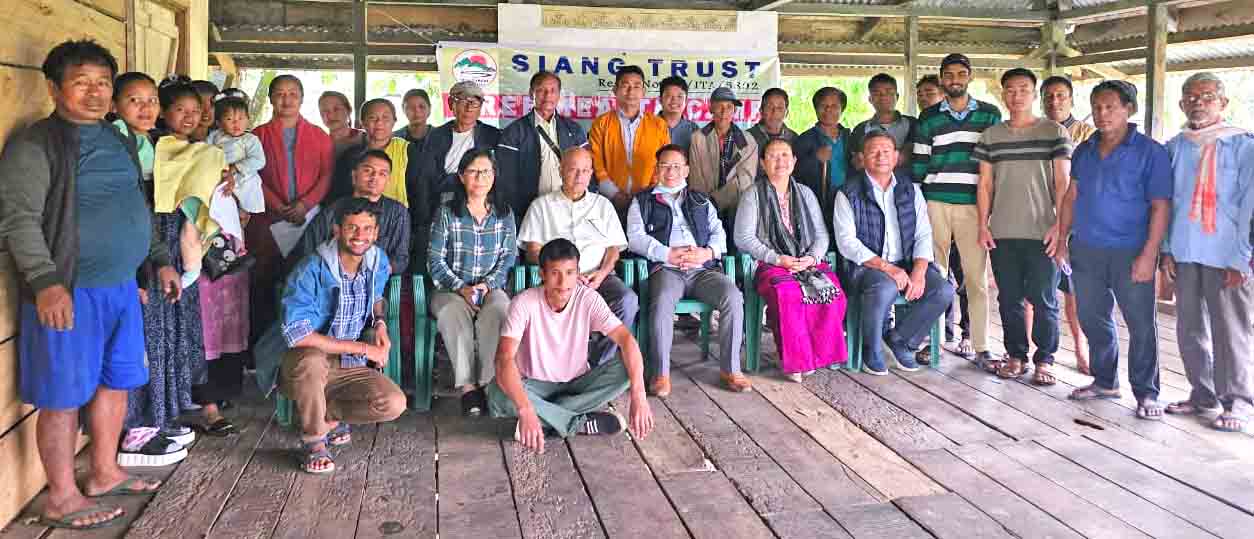-
 Capital DC expresses disappointment at sluggish work on NH 415…
Capital DC expresses disappointment at sluggish work on NH 415…
-
Body to carry drive against non APST enjoying ST benefits
-
Governor appeals Arunachal youth to volunteer for Indian Red Cross…
-
 Free health consultation camp held at Mer
Free health consultation camp held at Mer
-
West Siang reviews preparedness for monsoon
-
Flying squad raids shops near schools, tobacco products seized
-
Workers Union allege illegal appointments in PHED&WS department
-
Capital DA seeks citizens cooperation to check earth cutting,…
-
AYA must lead crusade against drug menace:Nani Opo
-
Whistleblower Gyamar Padang remembered on first death Anniversary
Agencies
AGARTALA ,Jul 9 : Communist Party of India (Marxist), which came to power in 1993, has been ruling Tripura for a generation now. It is led by Chief Minister Manik Sarkar, known for his clean Gandhian-Marxist image, since 1998. But as it seems, the saffron forces led by BJP have been hijacking not only the opposition space from Congress and Trinamool Congress but also making their way to capture power in the upcoming 2018 assembly elections. Apart from a shaky Kerala, Tripura is the last unfallen fort of the Left Front in India led by the CPM.
A huge amount of money has been injected to hijack the popular rhetoric of working class politics and blend it with regional sub-nationalism. BJP has in a very short time made its presence felt in the interior tribal areas which have remained the Left base for decades. Most of the regional parties, except Indigenous Peoples’ Front of Tripura (IPFT), which is an extreme sub-national party demanding a separate state called Twipraland for tribals, have aligned themselves with the BJP.
The Opposition has been very weak for the last 20 years in the state. The Left Front came to power after a very weak coalition government led by Congress that lost in 1993. They knew they were going to stay for long. After a brief five-year term by veteran tribal leader Dasarath Deb as chief minister, Sarkar took over as the head of the government in 1998. His first challenge was to stop state wide insurgency and restore law and order. His government in order to decimate the armed groups and fronts militarised the state. One of the outcomes of this militarisation has been the construction of good roads in the interiors, which helped the state propaganda as indicators of development.
In order to obliterate the ideological basis of ethno-nationalism, Sarkar’s government expended enormous energy in reinventing the narrative of Tripura’s immutable connection to Bengal, visible in the vigorous attempts to rename places and historical sites. The renaming of the Agartala airport after Rabindranath Tagore has been resisted time and again by the indigenous people led by royal scion Pradyot Bikram Kishore Debbarman who want it to be renamed after Maharaja Bir Bikram Kishore Manikya, the last king of Tripura who built the airport in 1942. Sarkar is now seen more as a Bengali nationalist than as a communist leader. Now, his government has sought to campaign, successfully, to brand itself as the government which has been able to usher Tripura towards development, create communal harmony and project itself as a model government. It can now boast of achievements, such as putting Tripura on the literacy map, influencing tribal minds to shun militancy and return to the mainstream and building the modern jail in Bishalgarh.
Outside Tripura, people speak of the purest and poorest chief minister of India, but not of the poor population. Today in Tripura, Tripura State Rifles camps are strategically located between Bengali habitations and tribal villages to keep peace. The Left Front in its self-proclaimed “golden era” of Tripura is also in its weakest position. It is holding power while crushing any form of ethno-nationalist assertion. This has given space to not only BJP but also regional right-wing parties to mobilise people in their own terms.
The politics of victimhood played by IPFT, a regional tribal based party, has mobilised the tribal population like never before. In regards to their long-standing demand of a separate state Twipraland they have called a blockade of National Highway-8 and the railway link to Agartala on 10 July, 2017. Banned insurgent group National Liberation Front of Tripura is also supporting the blockade, according to some reports.
Even CPM ground level cadres are shifting bases citing betrayal by the party. They allege that the party practices democratic centralism only on paper, while in practice it’s a totalitarian monopoly of power. Sarkar is at the helm of affairs. Being the only politburo member, he is virtually the party chief in the state. When faced with criticism at the party level, he deals it with the governmental machinery, and when someone points finger at him as a chief minister, he kicks the person out saying that they are drifting away from class struggle. The present cabinet is two decades old and has hardly any new or young face in years. Thus, the youth have time and again deserted the party.
The power, though Stalinist in nature now, is at its all-time lowest self-confidence due to a goof-up in the recruitment of 10,323 teachers in government schools which were declared null and void by the Tripura High Court. All the 10,323 teachers, some even married with a family lost their jobs. The state has provided them no alternative as the order came from the high court. It is important to note that Tripura has no indigenous industrial economy of its own. The agrarian sector also is a poorly sustainable one with relatively no growth. Thus, the working-class politics largely revolves around the 2.9 lakh government sector employees and pensioners. Unlike other states, Tripura has a largely homogenous but bi-polar vote bank comprising only Hindu Bengalis and tribes. Thus, the political strategy is designed centered around the government sector working class mostly.
The Tripura state government pay structure is still stuck in the 4th Pay Commission of the 1980s. There has been a lot of criticism about the government for not implementing the 7th Pay Commission recommended pay structure in the state. The state BJP in a memorandum before the governor said that Tripura government constituted a Pay Review Committee in 2008 and a Pay and Pension Revision Committee in the present year against all norms. The BJP alleged that the recommendations of such committee have led to a huge gap between the pay and allowances drawn by the state and Central employees, officers and pensioners. While most states have decided to accept the recommendations of the 7th Central Pay Commission, the Left Front government of Tripura refuses to do so.
According to this report by Tripura Infoway, former finance minister Badal Chowdhury had raised the employees issue several times in the cabinet meetings in the last three years. But, it was Sarkar, at his Stalinist best, who had not allowed the then finance minister to pass the ‘increased salary structure’ of the state employees in the cabinet. The idea is to keep the poor as they are, as it works best for the class party to function, alleges many.
Earlier, BJP president Amit Shah and Assam chief minister Sarbananda Sonowal had promised to implement the 7th Central Pay Commission at the earliest if BJP is voted to power scheduled to be held next year.
The state government as always blames the Centre for not providing enough funds to provide an increment.
On 13 June, in an attempt to checkmate the BJP, which has already promised a salary hike, finance minister Bhanulal Saha announced a massive 19.68 percent increase in all sectors of state government. Saha told reporters that the average increase for Group D employees will be Rs 4,000, for Group C employees it will be Rs 5,500, for Group B officials the average increase will be Rs 9,500 and for Group A officials, it will be Rs 15,000 per month. There were some other incentives as well like holidays on every fourth Saturday along with the present second Saturday holiday. "Although we cannot offer pay package on par with the 7th Pay Commission, the government has given its best keeping in mind of its financial constraints,” he said.
According to a press note issued by the state government, the upgradation in pay structure comes into effect from 1 April, 2017. There have been mixed reactions following the decision. Many, including opposition BJP and TMC have called it a publicity stunt to recapture the voter emotions months before the election. While state Congress chief Birajit Sinha welcomed the move by saying “something is better than nothing”.
Trinamool Congress is being seen as the third force in the upcoming elections as it comprises most of the veteran leaders of the former opposition Congress party. But a section of the leaders led by Sudip Roy Barman is trying lobby with the BJP and may even end up voting for NDA candidate Ram Nath Kovind in the upcoming presidential election on 17 July. The internal turmoil in the party has been such of late that according to some reports six top leaders of the party were shown the door. The bickering within the TMC, which has been seen as a pro-Bengali party since its inception in the state, now looks weaker than the Congress.
Despite the salary hike, the government employees are not quite happy with how things have turned out during this long Left Front rule, making the government vulnerable to anti-incumbency. The tribals have remained a concrete voter base of the communists since the 1960s but this bastion is too under threat. In these circumstances, it is not surprising at all to see that the BJP with its winning spree all over the country of late has sniffed a possibility of overthrowing the Left rule in the state. But before the state poll, it is the magnitude of the 10 July protests of the IPFT demanding Twipraland that might add another dimension to the whole political scenario in Tripura.
(The author is pursuing his master's degree at the Centre for Historical Studies, Jawaharlal Nehru University)
==

Kenter Joya Riba
(Managing Editor)She is a graduate in Science with post graduation in Sociology from University of Pune. She has been in the media industry for nearly a decade. Before turning to print business, she has been associated with radio and television.
Email: kenterjoyaz@easternsentinel.in / editoreasternsentinel@gmail.com
Phone: 0360-2212313

